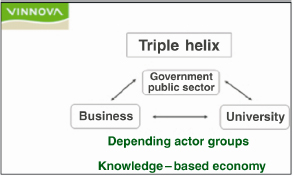Chapter 13
Governance and Short-Term Product Development in Clusters — An Example: The FIRE Application1
13.1. Introduction
The development of clusters in France, after selection and the establishment of governance, has followed different trajectories, as shown by a recent evaluation of these clusters by an auditing company [KPM 06] (the results of this evaluation are due for publication in 2011). However, a certain number of articles and discussions have led us to think that, in certain cases, the development of clusters has led to “drifting”. The appropriation of various projects by big businesses has led to a certain degree of abandonment of the primary function of clusters, which was the establishment of relationships and actions contributing to the comfort and development of small and medium industries and businesses present in clusters [DOU 06].
At the outset, the creation of clusters was supposed to lead to the development of new synergies through public—private partnerships brought about by the different players involved in the cluster: the state (or regional governments), research and education, and industry. These aspects have received attention in various publications, including the work of Michael Porter and the Dutch school (triple helix) (Figure 13.1) [LEY 98].
Figure 13.1. Triple helix [INT 07]

We should also remember that the development of clusters was intended ...
Get Competitive Intelligence and Decision Problems now with the O’Reilly learning platform.
O’Reilly members experience books, live events, courses curated by job role, and more from O’Reilly and nearly 200 top publishers.

